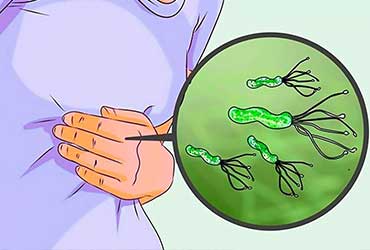HelPylori
Helicobacter pylori, or Helpylori, has been infecting humans for over 58,000 years. One of the main reasons for the spread of Helpylori is unclean water and poor sanitation. And although most of the Western world has improved sanitation and clean drinking water, these extremely harmful bacteria still affect nearly two-thirds of the world’s population. Countries, where uncontained human waste, decaying food, and unsanitary water are common, continue to have new cases every year. Poor sanitation or coming into contact with the saliva of an infected person are the main causes.
What are Helicobacter pylori?
Helpylori is a type of bacteria that can enter the body and live in the digestive tract indefinitely. Once in the body, the bacteria attack the lining of the stomach, leaving it unprotected from the potent natural acids used to digest food. Once the lining has been damaged, these acids leak into other areas of the body causing ulcers, infections and internal bleeding. If left untreated for long periods of time, the germs can cause stomach ulcers, which can lead to stomach cancer. This connection was brought to light by advances in modern medicine in 1982 when scientists discovered that these bacteria were linked to stomach ulcers and gastric cancer. Once considered uncommon, now we know that about 5.5% of all gastric cancers globally stem from Helpylori. Some research suggests that Helpylori increases the risk of developing other diseases. This would mean that the effects of the bacteria could be much wider and more deadly.
Symptoms:
- Bloating and/or burping
- Decreased appetite
- Nausea and/or vomiting
- Unexplained weight loss
Serious symptoms which can be immediately dangerous to your health:
- Dark red, bloody, or black stool
- Difficulty breathing
- Dizziness
- Chronic fatigue
- Vomit containing blood or looks like coffee grounds
- Severe, sharp stomach pain
Diagnosis
A physical exam including putting pressure on the abdomen to check for swelling or pain are the first steps. Other tests include blood and stool samples or a urea breath test. If ulcers are detected, doctors generally recommend an upper gastrointestinal endoscopy, upper GI tests with barium or a CT scan of your internal organs.
Treatment
If Helpylori bacteria are found, treatment is necessary to: 1. kill the bacteria, 2. heal the stomach lining, and 3. prevent future sores from coming. An effective Helpylori vaccine is expected in the next future, which means getting rid of the germs is only possible with aggressive medication. Treatment may take several weeks to work. Currently, there are four main methods of drug treatment:
- antibiotics (usually prescribed with two types
- stomach acid-reducing drugs
- Bismuth subsalicylate
- histamine blockers
Prevention
Although more common in children (possibly due to poor hygiene habits), Helpylori can also infect adults. Generally accepted hygiene practices go a long way in preventing the spread of this dangerous germ including:
- washing hands after using the toilet and before preparing food
- avoid unclean food and water sources
- avoid food that is not thoroughly cooked
As with many other organisms, Helpylori antibiotic resistance is increasing. So, the best defense it to avoid getting the bacteria in the first place.

